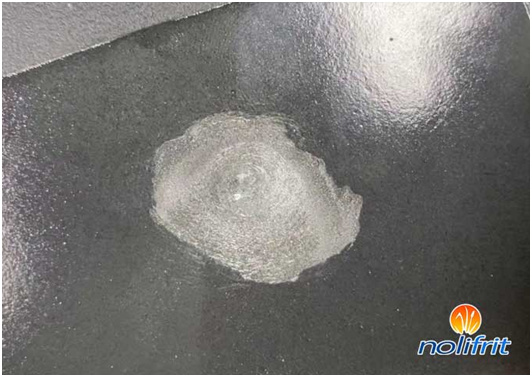The Standards of Enamel Ground Coat
Enamel ground coat is particularly important in enamel. Its key point strong adhesion, is to form a strong chemical bond when combined with steel plate. After one kilogram of cone rod (3mm diameter ball at the cone head) and a height of 750m, the free fall impacts on the surface of the porcelain layer of the steel plate, forming a wire mesh is good, and the blocky bare plate with exposed iron is bad.

The surface quality of the enamel ground coat: the porcelain surface is fine and smooth, without pits, bubbles, boiling, shrinkage, and cracking defects.
The firing resistance of the ground coat and the number of firing times are extremely important. If the ground coat is well-coated and fired, then the cover coat is fired again or several times, and defects such as line patterns, silk mesh bubbles, and black spots will occur. This is caused by the lack of fire resistance of the ground coat; the usual solution is to match soft and hard, and add a certain amount of quartz powder.
The firing time of the enamel ground coat: the firing cycle depends on the composition of the ground coat, which depends on the viscosity of the ground coat, surface tension, the amount of dissolved iron oxide, and the changes in these properties during firing. The composition of the ground coat is different , The speed of firing is also different. If the firing time of the ground coat is not measured correctly, the time is too short, even if the temperature is correct, the bonding effect will not occur. If the firing time is too long, the melt will be saturated with iron oxide, copper spots and other defects will appear. , Cobalt-containing ground coat enamel, when fired properly, the color is black. If the heat is not suitable, it will be dark blue-gray, and the surface will be dull. If the heat is too high, it will show a dull green due to the relationship between iron oxides. The ground coat containing only nickel oxide rarely changes color and is brown when fired.